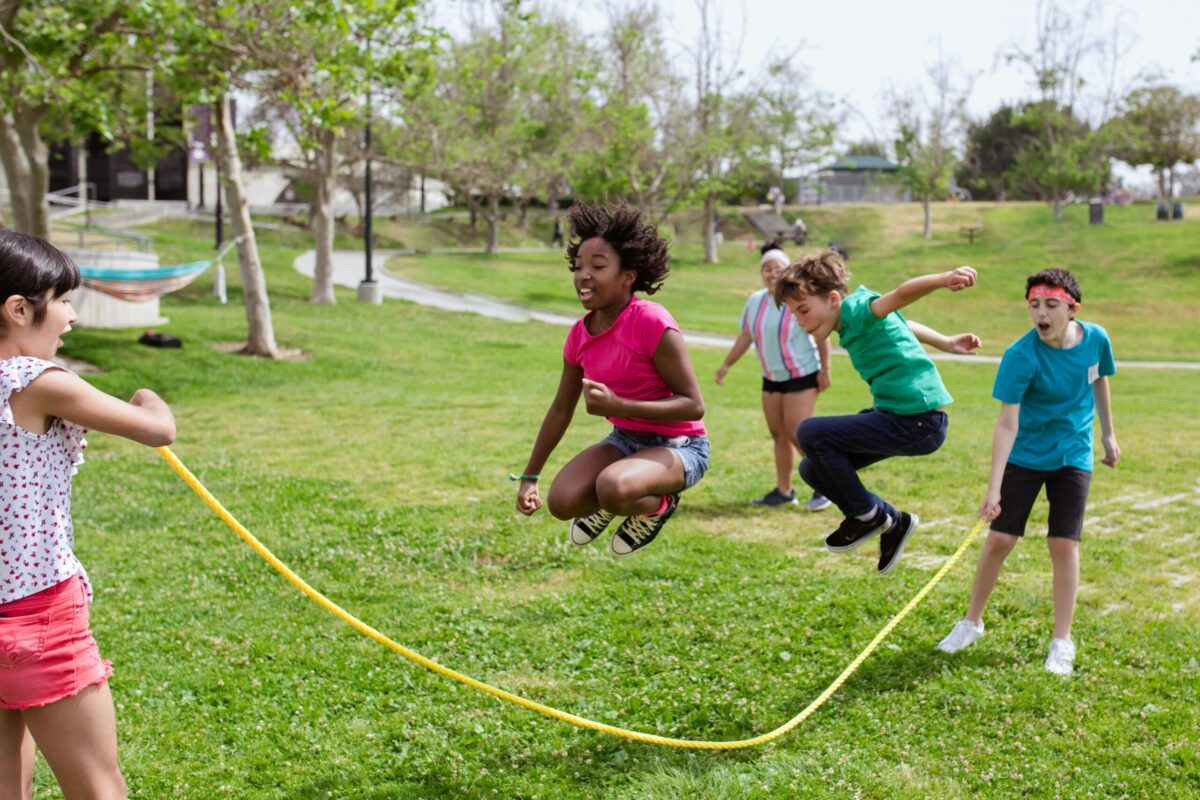The STAR (Situation, Task, Action, and Result) method is a useful framework for answering behavioral questions in your school job interviews. It allows you to structure your responses by addressing the Situation, Task, Action, and Result. Below are several examples of how you might use the STAR method to craft responses to common interview questions for school leadership roles..
These examples not only serve as a guide to framing your own experiences but also empowers you to highlight your strengths in a way that resonates with interviewers. By personalizing these examples with your own unique situations, tasks, actions, and results, you can demonstrate your leadership, problem-solving, and collaboration skills in the context of school administration.
Interview Questions with Sample STAR Responses
Tell me about a time when you had to implement a change or a new initiative in your school.
Sample Response:
- Situation: Last year, I was serving as the principal at ABC Elementary School, and we were required to implement a new curriculum that aligned with state standards and district goals.
- Task: My responsibility was to lead the change, ensuring the successful adoption of the new curriculum by teachers, students, and parents.
- Action: I communicated the vision, benefits, and purpose of the new curriculum to all stakeholders. I involved teachers in the planning and implementation process, providing them with the necessary training, resources, and support. I also sought feedback from parents and students to ensure the curriculum was meeting their needs. Regular evaluations were conducted to monitor progress and make adjustments where necessary.
- Result: The new curriculum was successfully implemented, and both teachers and students adapted well to the changes. Academic performance improved, and the curriculum met the state standards. The initiative was well-received, and the school received positive feedback from stakeholders. This experience highlighted my leadership in change management, communication, and collaborative problem-solving.
Tell me about a time when you had to deal with a crisis or an emergency in your school.
Sample Response:
- Situation: Two months ago, as the vice-principal at DEF Middle School, a fire broke out in the cafeteria during lunch.
- Task: My immediate task was to ensure the safety and well-being of the students and staff in the event of a crisis.
- Action: I quickly activated the fire alarm and implemented the emergency evacuation plan. I guided students and staff to exit the building calmly while maintaining order. I coordinated with local fire departments and law enforcement, providing them with key information. Once outside, I ensured all students and staff were accounted for and provided comfort and first aid as necessary.
- Result: The fire was contained without major injury or damage. All students and staff were safely evacuated, and the school resumed operations the following day. This experience taught me how to handle a crisis effectively and prioritize the safety of the school community.
Tell me about a time when you had to develop or improve a program or service in your school.
Sample Response:
- Situation: Last semester, I was working as a counselor at GHI High School and needed to create a new program that would provide academic and career guidance to students.
- Task: My task was to design a comprehensive program that met the diverse needs of the student body, considering our large population and limited resources.
- Action: I gathered input from students, teachers, and parents to understand their needs. I researched best practices in academic and career counseling and collaborated with local colleges and businesses to provide real-world opportunities. The program included workshops, mentorships, online resources, and seminars.
- Result: The program was well-received, with students expressing satisfaction and showing increased engagement in academic planning and career exploration. The program led to an increase in college enrollment and graduation rates, and it received recognition from both the school community and external partners. This initiative showcased my ability to develop impactful programs and services in a school setting.
Tell me about a time when you had to motivate or inspire others in your school.
Sample Response:
- Situation: Last month, as a teacher leader at JKL Elementary School, I was tasked with motivating both teachers and students in preparation for a high-stakes standardized test.
- Task: My role was to inspire the school community to stay focused and motivated, despite the stress and anxiety surrounding the upcoming test.
- Action: I used a combination of motivational quotes, success stories, and positive reinforcement to boost morale. I worked with teachers to provide students with effective test-taking strategies, while also organizing stress-relieving activities to create a positive environment. I encouraged everyone to do their best and focus on the progress they had made.
- Result: The entire school community felt more confident and prepared. Both teachers and students performed well on the test, surpassing expectations and goals. The experience reinforced my ability to inspire and lead others during challenging times.
Tell me about a time when you had to collaborate or partner with others in your school or outside your school.
Sample Response:
- Situation: Last year, I was serving as the librarian at MNO Middle School, and we partnered with a local library to create a reading program aimed at improving literacy and fostering a love of reading among students.
- Task: My responsibility was to collaborate with both the local library and school staff to design and implement the reading program.
- Action: I communicated the shared vision of promoting literacy, and worked closely with the local library staff and school team to develop a program with various components, such as book clubs, author visits, and reading challenges. I ensured that all resources were shared and responsibilities clearly defined.
- Result: The program was a success, with students engaging in the reading activities and improving their reading skills. The program strengthened the relationship between the school and local library, and it received praise from both the community and the district. This project emphasized the importance of collaboration and community partnerships in education.
Tell me about a time when you had to handle a budget challenge in your school.
Sample Response:
- Situation: As the principal of PQR High School, I was faced with a budget cut that impacted the funding available for extracurricular activities.
- Task: My task was to ensure that students could still participate in extracurricular activities despite the reduced funding.
- Action: I worked closely with the student council, teachers, and local community organizations to identify alternative funding sources. We organized fundraising events, applied for grants, and streamlined expenses to make the most of the remaining budget.
- Result: We successfully secured additional funding and were able to keep extracurricular programs running. Students remained engaged, and the community felt more connected to the school. This experience taught me the importance of financial resourcefulness and creative problem-solving.
Tell me about a time when you had to address a performance issue with a staff member.
Sample Response:
- Situation: As an assistant principal at XYZ Middle School, I noticed that one of our teachers was consistently struggling to meet classroom management expectations.
- Task: My responsibility was to address the performance issue and help the teacher improve their skills.
- Action: I scheduled a private meeting with the teacher to discuss the challenges they were facing and listened to their concerns. We developed a professional development plan that included classroom management workshops and ongoing support. I observed their classes and provided constructive feedback, focusing on specific strategies to improve.
- Result: Over time, the teacher’s performance improved significantly, and their classroom management skills became stronger. Student behavior improved, and the teacher felt more confident in their role. This situation highlighted my ability to address performance issues with empathy and support.
Tell me about a time when you had to work with a challenging student or group of students.
Sample Response:
- Situation: As the principal at ABC High School, I encountered a group of students who were repeatedly disruptive in class and were negatively affecting the learning environment.
- Task: My task was to address their behavior and help them become more engaged in school.
- Action: I worked with the school counselor and teachers to meet with the students and understand the root causes of their behavior. Together, we developed a behavior intervention plan that included mentoring, restorative justice practices, and academic support. I also kept in close contact with the students’ families to ensure we had their support.
- Result: Over time, the students’ behavior improved, and they became more engaged in their academic work. The overall classroom environment became more positive, and the students showed increased respect for their peers and teachers. This experience reinforced my belief in the power of collaboration and intervention in addressing student challenges.
Tell me about a time when you had to improve communication between different stakeholders in your school.
Sample Response:
- Situation: At DEF Elementary School, I identified a communication gap between parents, teachers, and administration that was hindering our ability to address student needs effectively.
- Task: My responsibility was to improve communication across all levels to enhance student success.
- Action: I implemented a monthly newsletter, organized regular parent-teacher meetings, and created a shared online platform where teachers and parents could exchange updates on student progress. I also held informational sessions to educate parents on how they could support their child’s learning.
- Result: The improved communication led to better collaboration between parents and teachers, and students received more consistent support. Parent involvement increased, and the overall academic environment improved. This experience demonstrated my ability to bridge communication gaps and foster stronger partnerships.
Tell me about a time when you had to advocate for your school or a student.
Sample Response:
- Situation: As the principal of LMN High School, I noticed that many of our students with special needs were not receiving adequate support in their general education classes.
- Task: My task was to advocate for additional resources to ensure these students had the support they needed to succeed.
- Action: I worked closely with the special education team and parents to gather data on the students’ needs. I presented the findings to the school board and successfully advocated for increased funding for additional aides and resources. I also partnered with local community organizations to provide supplementary support.
- Result: The increased resources allowed students with special needs to thrive in their academic environment. Academic performance improved, and students reported feeling more supported and included. This experience showed my commitment to advocacy and providing equitable educational opportunities for all students.
In Conclusion
Using the STAR method in your school leadership interview is an effective way to provide structured and clear responses to behavioral questions. These examples showcase a wide range of leadership skills, from managing crises to implementing new initiatives, and will help you demonstrate your readiness for a leadership role in a K-12 school. Adapt these examples to your own experiences, and you’ll be better prepared to impress any interviewer or panel.
We wish you the best of luck as you search or prepare for a new role!
Related Posts
25 School Leadership Resume Action Phrases
How to Use the STAR Method to Answer Interview Questions
How to Conduct a Self-Assessment to Identify Your Strengths and Weaknesses





